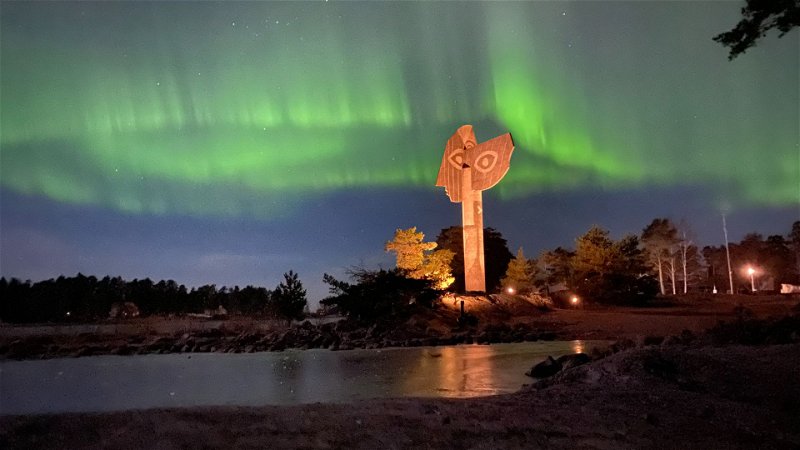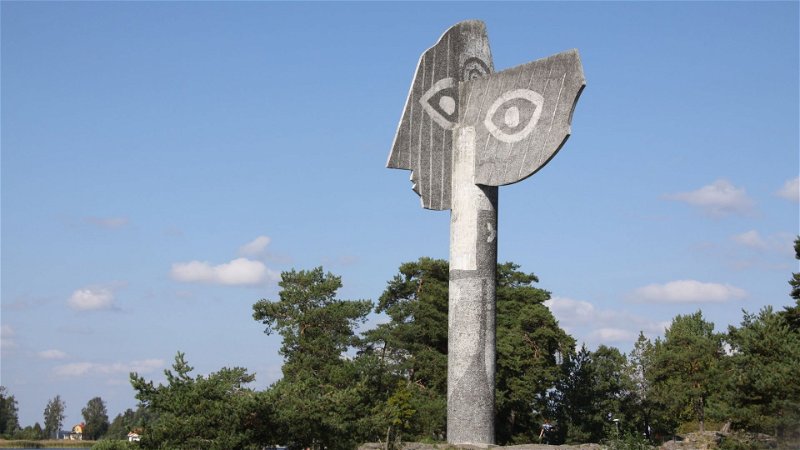One of the worlds largest Picasso sculptures is located in Kristinehamn.
Why does one of the world’s largest Picasso sculptures happen to be in Kristinehamn? Well, it all began on a dusty country road in France. In the late 1950s the artist Bengt Olson, born and raised in Kristinehamn, met the Norwegian sculptor, painter and photographer Carl Nesjar, who had just begun experimenting with a new concrete-based material. At the time, Nesjar was involved in a project with Pablo Picasso, who was fascinated by the expression of art through the medium of concrete. They were working with a series of sculptures called “les dames des Mougins” (The Ladies of Mougin), the theme of which was Picasso’s wife Jacqueline. The idea was to make the sculptures in monumental format. The largest could be built for 150,000 SEK (material and labour). But time was short because New York was expected to make an offer at any time! Bengt Olson, now a man with a mission, returned home to Kristinehamn and managed to convince the town council that this was a unique opportunity that was too good to miss. The idea of locating the sculpture in Kristinehamn was presented to Picasso with the help of photographs, pictures and folk music so that he could get a true feeling for the atmosphere by the lake. The deed of gift came in the form of a photograph from Picasso, with a model of the sculpture in place on the Strandudden peninsula. He had written the word Oui (Yes) on the photograph and signed it Picasso 7.7 1964.
The sculpture was inaugurated in June 1965 by the Swedish author Bo Setterlind at the annual midsummer celebrations. Although Pablo Picasso followed Carl Nesjar’s work via film recordings, he never came to Kristinehamn to see his work in real life. Many others have, however, and this is now Kristinehamn’s most popular tourist attraction.
The sculpture is one of Picasso’s largest of its kind and is 15 m tall. The pillar is 1.65 m in diameter and it has two “wings”, one of which weighs about 8 tons and has a span of 6 x 4 m. It is made of “natural concrete” iinto which black granite stones were injected. The artistic decor was then sandblasted by the Norwegian artist Carl Nesjar. The surface is so hard that Nesjar thought it would last for 2,000 years!
Your own Picasso guide can be booked every Wednesday at 10.00 from 26 June to 7 August. Optional language Swedish or English.



